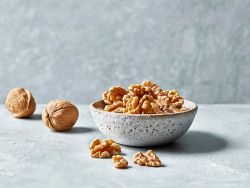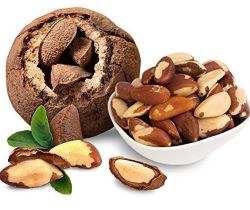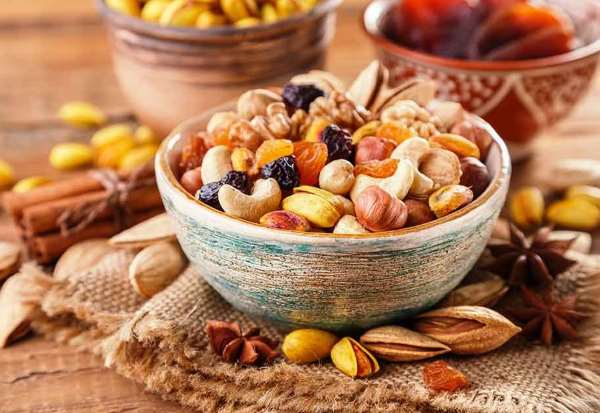Are Dry Fruits Good for Eyes?
Yes, dry fruits are good for eyes. They are a good source of vitamins and minerals that are essential for eye health. Maintaining a good eye health is becoming more and more important in the modern world where screens control our every day lives. Many wonder if dry fruits hold the key to enhancing and preserving our precious eyesight. Let’s dive into the realm of nutrition and discover the truth behind the question: are dry fruits good for eyes?
Benefits of dry fruits on eye health
Dry fruits offer several benefits for eye health due to their rich content of vitamins, minerals, and antioxidants. Here are some ways in which dry fruits can contribute to maintaining and enhancing your vision:
Vitamin A
Dry fruits like apricots and raisins are excellent sources of vitamin A, a crucial nutrient for good vision. Vitamin A helps maintain the health of the retina, the light-sensitive layer in the back of the eye, and supports night vision.
Vitamin E
Almonds and hazelnuts are high in vitamin E, which is an antioxidant that helps protect the cells of the eyes from damage caused by free radicals. This protection can potentially reduce the risk of age-related macular degeneration (AMD) and cataracts.
Omega-3 Fatty Acids
Walnuts are a source of omega-3 fatty acids, which have anti-inflammatory properties and can promote healthy blood flow to the eyes. These fatty acids are linked to a lower risk of AMD and dry eyes.
Antioxidants
Blueberries, although not traditionally considered a dry fruit, are rich in antioxidants such as vitamin C and vitamin E. These antioxidants can help combat oxidative stress in the eyes, reducing the risk of eye diseases.
Lutein and Zeaxanthin
Dried fruits like dried apricots and raisins contain lutein and zeaxanthin, two antioxidants that accumulate in the retina and help filter harmful high-energy light waves, such as blue light. This can protect the retina from damage caused by prolonged screen time.
Blood Sugar Regulation
Some dry fruits, like prunes and figs, have a low glycemic index and can help regulate blood sugar levels. This is important because fluctuations in blood sugar can affect the blood vessels in the eyes and contribute to diabetic retinopathy.
Collagen Production
Vitamin C-rich dried fruits like kiwi and citrus fruits support collagen production in the eyes. Collagen is essential for maintaining the structure of the eyes and preventing conditions like weak blood vessels in the retina.
Minerals
Dry fruits such as pistachios and cashews provide minerals like zinc and selenium. Zinc supports the health of the retina and may slow down the progression of AMD. Selenium, on the other hand, has antioxidant properties that contribute to overall eye health.
Incorporating a variety of these dry fruits into your diet can provide your eyes with a combination of nutrients that support their health and function. Remember that while dry fruits can be beneficial, maintaining a balanced diet rich in a variety of nutrients and regular eye check-ups are also important for optimal eye health.
The Nutrient-Rich Dry Fruits
The question often arises, which dry fruit is better for eyes? Which dry fruits for weak eyesight? Dry fruits, the concentrated form of fresh fruits, are a treasure trove of essential nutrients that support overall health. When it comes to eye health, several dry fruits stand out for their exceptional nutrient profiles. Let’s explore the potential benefits of dry foods and discover which ones might contribute to sharper eyesight.
1. Almonds: A Vision Superfood

Image Credit: The Indian Express
Almonds, often referred to as nature’s powerhouses, are rich in vitamin E, a potent antioxidant that helps protect cells from oxidative stress. Studies suggest that vitamin E may play a pivotal role in reducing the risk of age-related macular degeneration (AMD) as well as cataracts, a leading cause of vision loss.
Aim for approximately 22 international units (IU), which is equivalent to about 15 mg of vitamin E daily. A single serving of almonds equals around 23 nuts, or a quarter-cup, and provides 11 IU. Other vitamin E-rich nuts and seeds include sunflower seeds, hazelnuts, and peanuts.
You can relish almonds as a snack at any moment, and they also complement your breakfast cereal, yogurt, or salads deliciously. However, do keep track of portion size. Almonds are calorie-dense, so it’s advisable to moderate your consumption to one to two servings per day. Incorporating a handful of almonds into your daily diet could be a proactive step toward maintaining healthy eyes.
2. Walnuts: Nourishing Omega-3 Fatty Acids

Image Credit: Linkedin
Walnuts boast high levels of omega-3 fatty acids, particularly alpha-linolenic acid (ALA). These fatty acids are renowned for their anti-inflammatory properties and potential benefits for retinal health. While more research is needed, preliminary studies indicate that omega-3s might contribute to optimal vision by supporting retinal function.
- California walnuts are the most popular type of walnut in the world. They are grown in California, and they are known for their large size, smooth shell, and rich flavor. California walnuts are a good source of omega-3 fatty acids, protein, and fiber.
- English walnuts are also known as Persian walnuts. They are grown in many parts of the world, including Europe, Asia, and the United States. English walnuts are smaller than California walnuts, but they have a similar flavor. English walnuts are also a good source of omega-3 fatty acids, protein, and fiber.
- Persian walnuts are the original type of walnut. They are native to the Middle East, and they are still grown in that region today. Persian walnuts are similar in size and flavor to English walnuts. They are also a good source of omega-3 fatty acids, protein, and fiber.
3. Nuts: Nourishment for your Eyes

Image Credit: Dry Fruit Mart
Which nuts improve eyesight? Various nuts contain nutrients that can positively influence eyesight. Let’s delve into the nutty options that could enhance your visual prowess.
- Pistachios contain lutein and zeaxanthin, two carotenoids associated with reduced risk of age-related macular degeneration. Munching on these nuts might offer a tasty way to boost eye health.
- Brazil Nuts are rich in selenium, a mineral that plays a role in maintaining healthy eyesight. Selenium’s antioxidant properties can help protect the eyes from potential damage caused by free radicals.
4. Boosting Eyesight with Blueberries

Image Credit: Icepack Frozen Food
While not exactly dry fruits, blueberries deserve a mention in our quest for improved eyesight. Packed with anthocyanins, these tiny powerhouses exhibit anti-inflammatory and antioxidant effects. Some studies propose that regular blueberry consumption may help combat eye fatigue and improve night vision, making them an excellent addition to your eye-boosting arsenal.
The Impact of Daily Dry Fruit Consumption
What happens if we eat dry fruits daily? The benefits can be substantial, but moderation is key. Dry fruits are energy-dense, and overindulgence could lead to unintended weight gain. Furthermore, while dry fruits provide numerous health benefits, a balanced diet with a variety of nutrient sources remains essential for overall wellness.
Which dry fruit are good for eyes?
While dry fruits and nuts can contribute to better eyesight, it’s important to widen our scope to include other foods that promote eye health. There are many fruits that are good for eye health. Some of the best fruits for eye vision include:
- Carrots: Carrots are a good source of beta-carotene, which has been converted into vitamin A in the body. Vitamin A is vital for good vision, especially night vision.
- Sweet potatoes: Sweet potatoes are another good source of beta-carotene. They are also a good source of vitamin C, which is an antioxidant that can help protect the eyes from damage.
- Mangoes: Mangoes are a good source of beta-carotene, vitamin C, and lutein. Lutein is a carotenoid that helps protect the eyes from damage caused by blue light.
- Apricots: Apricots are a good source of beta-carotene, vitamin C, and potassium. Potassium is important for maintaining fluid balance in the eyes, which can help to prevent dry eyes.
- Blueberries: Blueberries are a good source of antioxidants, including vitamin C, vitamin E, and anthocyanins. Anthocyanins are a type of flavonoid that has been shown to improve night vision and protect the eyes from damage caused by free radicals.
- Strawberries: Strawberries are a good source of vitamin C, vitamin K, and fiber. Vitamin C is an antioxidant that can help protect the eyes from damage, while vitamin K is important for maintaining healthy blood vessels in the eyes.
- Kale: Kale is a good source of lutein, vitamin C, and vitamin K. Kale is also a good source of fiber and other nutrients that are important for overall health.
It is important to note that eating fruits alone will not guarantee good eye health. It is also important to get regular eye exams, wear sunglasses to protect your eyes from the sun, and quit smoking.
Which dry fruits weaken eyesight? Separating Fact from Fiction
The question often arises, while dry fruits offer valuable nutrients, they are not magical solutions. Some of the best dry fruits for eye health include almonds, walnuts, hazelnuts, pistachios, and apricots. These dry fruits are all good sources of vitamins and minerals that are essential for eye health, such as vitamin C, vitamin E, and omega-3 fatty acids.
However, there are some dry fruits that can be high in sugar or calories, which can contribute to other health problems that can indirectly weaken eyesight. These fruits are:
- Raisins
- Dates
- Dried figs
- Prunes
- Goji berries
Obesity is a risk factor for age-related macular degeneration, which is a leading cause of blindness in older adults. So, if you are concerned about your eye health, it is important to eat dry fruits in moderation and as part of a healthy overall diet.
Tips for Maintaining Eye Health
Ensuring the well-being of your eyes requires consistent effort. While consuming foods beneficial for your eyes is vital, it’s not the sole measure for safeguarding your vision. Additional steps you can take to promote healthy eyes encompass:
- Scheduling appointments with an eye specialist every one to two years.
- Protect your eyes from sunlight by wearing sunglasses during outdoor activities.
- Avoid smoking, a habit that can compromise eye health.
- Managing your weight within a healthy range, which contributes to overall eye wellness.
- Wear protective eyewear while participating in sports, hobbies, home tasks, or occupational duties.
- Maintaining blood sugar levels, particularly significant for those managing diabetes.
Remember, a combination of these practices, along with a balanced diet, forms a comprehensive approach to nurturing your eye health. Your eyes deserve the best care, and these measures collectively ensure their well-being over the long haul.
Backed by Research
Research studies continue to explore the relationship between dry fruits and eye health. A study(source) highlights the potential benefits of vitamin E-rich foods in reducing the risk of AMD. Another study(source) discusses the role of omega-3 fatty acids in promoting retinal health.
In conclusion, the journey to vibrant eye health involves a combination of factors, including a balanced diet, regular exercise, and routine eye check-ups. While dry fruits, such as almonds and walnuts, offer promising nutrients for eye health, they are most effective when integrated into a holistic approach to overall wellness. Remember, your eyes deserve the best care you can provide.
So, the next time you reach for that handful of almonds or savor delicious walnuts, know that you’re taking a step towards nourishing not just your body, but your eyes too.
Disclaimer: This article is for informational purposes only and should not be considered medical advice. Consult a healthcare professional before making significant changes to your diet or lifestyle.
Thanks for reading.
Image Credit: Hungrito and Others




